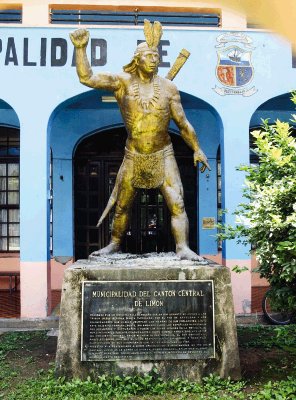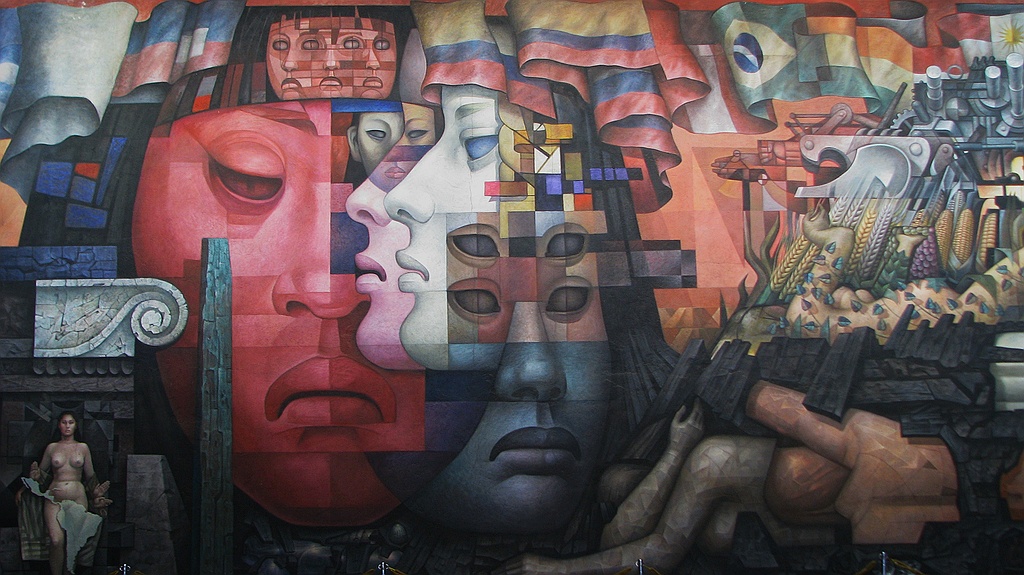Most people associate the 4th of July as the world famous Independence Day of the United States, but here in Costa Rica it is a very special day too! 304 years ago, in the central plaza of Costa Rica’s old capital, Cartago, the leaders of the Indian rebellion were put to death and their memory still lives on. Indeed, thousands of tourists marvel at the natural beauty of the country every year, but how much do we really know about the history of Costa Rica?
 Faced with the threat of slavery from both Hispanic colonists and English raiders, the inhabitants of Talamanca, the mountain range that separates Costa Rica and Panama, fought their last furious battle for freedom. One of the most important fights led for Independence was Pablo Presbere’s rebellion in 1709. The rebellion was initiated by the missionary movement of 1694 when Franciscan Fray Pablo de Rebullida came into the region. On September 28th 1709, a riot involving 10.000 indigenes was led by Pablo Presbere, cacique of Suinsí. This riot resulted in the death of Pablo de Rebullida, 10 soldiers and a woman. The indigenes led their riots all the way to Tuis, 50 km away from Cartago and destroyed the Cabécar, Urinama and Chirripó missionary reductions, 13 chapels, the convent houses and the lobbies of the towns. Consequently, the Spanish repression to Presbere´s rebellion was very tough. Granda and Balbín’s governor ordered a 200 soldier troop to repress the indigenes. Costa Rica and Panama, fought their last furious battle for freedom.
Faced with the threat of slavery from both Hispanic colonists and English raiders, the inhabitants of Talamanca, the mountain range that separates Costa Rica and Panama, fought their last furious battle for freedom. One of the most important fights led for Independence was Pablo Presbere’s rebellion in 1709. The rebellion was initiated by the missionary movement of 1694 when Franciscan Fray Pablo de Rebullida came into the region. On September 28th 1709, a riot involving 10.000 indigenes was led by Pablo Presbere, cacique of Suinsí. This riot resulted in the death of Pablo de Rebullida, 10 soldiers and a woman. The indigenes led their riots all the way to Tuis, 50 km away from Cartago and destroyed the Cabécar, Urinama and Chirripó missionary reductions, 13 chapels, the convent houses and the lobbies of the towns. Consequently, the Spanish repression to Presbere´s rebellion was very tough. Granda and Balbín’s governor ordered a 200 soldier troop to repress the indigenes. Costa Rica and Panama, fought their last furious battle for freedom.
700 indigenes were captured, including Presbere, but only 500 of them made it to Cartago where they would be sorted among officers, soldiers and the Cartago’s elite. The price of resisting to the Spanish domain was paid by the rebellion’s leader the following way:
“…I rule that I condemn Pablo Presbere to be taken out of his room, to be placed on a pack-saddle animal and to be taken around the city, screaming and declaring his crime, tied to a stick, blindfolded and killed by cutting his head, which will be placed high so everyone would see it.”
Criminal case against Pablo Presbere, 1710.

Even with the capture of the 700 Indians, the rebellion was seen as successful. As the Spanish had to leave the southern Caribbean region, Talamanca could finally regain its independence and sovereignty. After the insurrection of Pablo Presbere, Talamanca Indians strengthened their identity and dominance in that territory, increasing its role as a place of refuge for Aboriginal people who escaped the Spanish domain. This allowed the survival of traditions, identity and language of these cultures to this day.
The name of Presbere is etched in the collective memory of the indigenous Talamancan as a symbol of resistance against foreign invaders. Pablo Presbere was never part of the set of Costa Rican national heroes. However in March 1997, the Legislative Assembly of Costa Rica declared him Defender of Indigenous Peoples and raised a bust of him in t heir gardens. Some monuments in Costa Rica still honor the memory of Presbere: a 3.12 meter high bust, made of copper, in front of the Municipality of Limon, and a bronze bust which is in the courtyard of the Legislative Assembly of Costa Rica.
heir gardens. Some monuments in Costa Rica still honor the memory of Presbere: a 3.12 meter high bust, made of copper, in front of the Municipality of Limon, and a bronze bust which is in the courtyard of the Legislative Assembly of Costa Rica.
On July 4, the date of his execution, Indians remember him as their day, commemorating five centuries of struggle against foreign rule. Today, Talamanca still shows the same indomitable spirit and libertarian. Like yesterday, the unity of its people and leaders, remains key to meeting the challenges of today and tomorrow.
